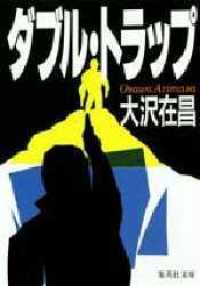- ホーム
- > 洋書
- > 英文書
- > Science / Mathematics
Full Description
This book, the third in the series Behavior of Radionuclides in the Environment, is dedicated to Fukushima. Major findings from research since 2011 are reviewed concerning the behavior of radionuclides released into the environment due to the Fukushima Dai-ichi Nuclear Power Plant accident, including atmospheric transport and fallout of radionuclides, their fate, and transport in the soil-water environment, behavior in freshwater, coastal and marine environment, transfer in the terrestrial and agricultural environment. Volume III discusses not only radionuclides dynamics in the environment in the short- and mid-term, but also modeling and prediction of long-term time changes.Along with reviews, the book contains original data and results not published previously. It was spearheaded by the authors from the Institute of Environmental Radioactivity at Fukushima University, established two years after the Fukushima accident, with their collaborators from Japan, Russia, and Ukraine.The knowledge emerging from the studies of the environmental behavior of Fukushima-derived radionuclides enables us to move forward in understanding mechanisms of environmental contamination and leads to better modeling and prediction of long-term pollution effects in general.
Contents
Part 1 Atmospheric transport and fallout of radionuclides 1 Air dose rate in Fukushima Prefecture measured during March 2011, the first organized measurement after Fukushima Daiichi Nuclear Power Plant accident 2 Atmospheric transport and deposition of Fukushima-derived radionuclides 3 Airborne radiation survey after the accident Part 2 Fate and transport of radionuclides in soil-water environment 4 Behavior of Fukushima-derived radiocesium in the soil-water environment: Review 5 Dynamics of radiocesium solid-liquid distribution coefficient in a soil-water environment 6 An overview of Fukushima-derived strontium radioisotopes 7 Erosion and redeposition of sediments and sediment-associated radiocesium on river floodplains (the Niida River basin and the Abukuma River as an example) Part 3 Radionuclide behavior in freshwater environment 8 Dynamics of radiocesium in urban river in Fukushima-city 9 Temporal variations in particulate and dissolved 137Cs activity concentrations in the Abukuma River during two high-flow events in 2018 10 The effect of groundwater bypass at the Fukushima Daiichi Nuclear Power Plant in 2014 by detailed facies analysis and 3D groundwater simulation 11 Modeling of behavior of Fukushima-derived radionuclides in freshwater Part 4 Radionuclide behavior in coastal and marine environment 12 Spatiotemporal variation of radiocesium in coastal and oceanic seawater 13 Spatiotemporal variation of radiocesium in coastal marine sediment 14 Cesium radioactivity in marine and freshwater products and its relation to the restoration of fisheries in Fukushima: A decade review Part 5 Radionuclide transfer in agricultural environment 15 Spatial distribution and temporal change of 137Cs activity concentration in dissolved and suspended fractions of irrigation waters collected from Fukushima 16 Mineralogical factors controlling the ability to retain 137Cs in Andosols in Japan 17 Soil Properties Affecting Soil-to-Crop Transfer of Fukushima-Derived Radiocesium 18 Model of radionuclide uptake by plants via foliar pathway: Kyshtym, hernobyl, Fukushima Part 6 Radionuclide transfer in terrestrial environment 19 Behavior of Fukushima-derived radiocesium in forest ecosystems 20 Radiocesium contamination in wild rodents inhabiting forested areas inside the evacuated area in Fukushima, Japan 21 Concentrations and transfer parameters of 137Cs for wild boar 22 Variation of cesium-137 concentration in wild boar and Asian black bear 23 Physicochemical fractions of radiocesium in the stomach con-tents of wild boar and its transfer to muscle tissue








